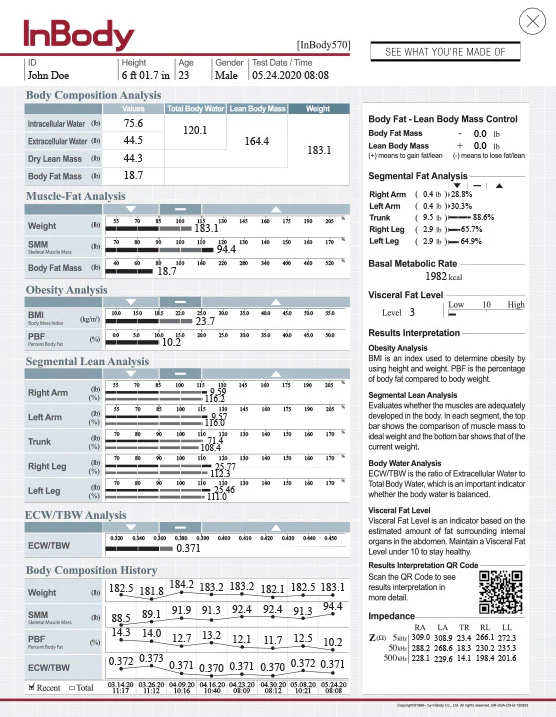

If you've recently done an InBody scan and felt overwhelmed by the numbers and charts, you're not alone! The InBody Result Sheet is actually a powerful tool that helps you understand what’s really going on inside your body – far beyond just your weight. Instead of relying on the scale alone, it breaks your body down into its key components: muscle, fat, and water. When you understand these measurements, you can set more accurate health and fitness goals and track your progress more effectively.
One of the main areas on the InBody sheet is Body Composition Analysis, which includes how much of your weight comes from water, muscle, and fat. It even breaks down your Total Body Water into water inside your cells (Intracellular Water) and water outside your cells (Extracellular Water). This balance is important because it can show if you're retaining water or possibly experiencing inflammation. A specific ratio called ECW/TBW helps highlight if this balance is off — generally, you want this number to be below 0.390. Repeating the scan regularly helps establish what’s normal for your body and spot any changes early.
Another helpful section is the Muscle-Fat Analysis. This graph compares your total weight, Skeletal Muscle Mass (SMM), and Body Fat Mass to average healthy ranges for your height and gender. It’s a favorite for many because it shows clearly whether weight changes are due to gaining muscle or fat. For example, if your weight has gone up but your skeletal muscle also increased while fat decreased, that’s a great sign you’re gaining lean muscle and getting stronger. On the flip side, losing weight but also losing muscle could mean your body is under-fueled or over-stressed, which isn’t healthy either.
Lastly, the Body Composition History section tracks your progress over time. This graph allows you to see trends in key metrics like weight, muscle mass, body fat percentage, and water balance. It helps separate real progress from short-term fluctuations. For example, instead of celebrating a quick drop in weight, you can dig deeper to see if it was mostly water loss, fat loss, or unfortunately, muscle loss. In short, the InBody scan gives you a full picture — not just of how much you weigh, but what your weight is really made of — and that knowledge is powerful when it comes to improving your health and reaching your goals.
So what exactly do all these numbers mean?
If you haven't yet booked an Inbody Scan at BC, book one today! In the Push Press Member App, go to appointments > body fat scanner > select for free under BC Member Quarterly Inbody Scan.